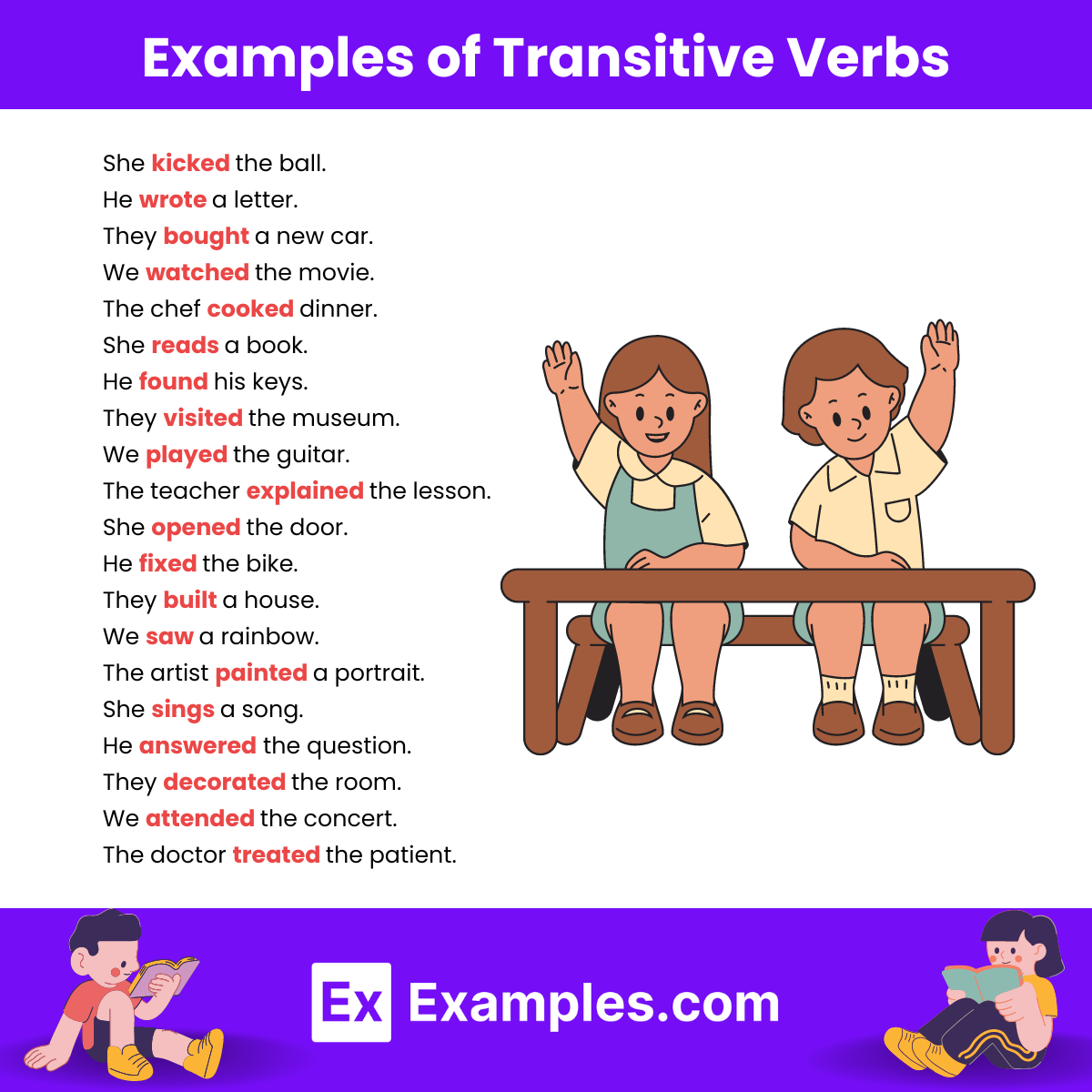Transitive verbs are action verbs that have a direct object. This means that the action of the verb is done to someone or something. Understanding the different types of transitive verbs can help improve your writing and communication skills.
Transitive verbs can be classified into different categories based on their relationship with the direct object. Knowing these types can help you use them effectively in your sentences.
Types of Transitive Verbs
1. Simple Transitive Verbs: These are verbs that have a direct object without any additional words. For example, “She ate the cake.” In this sentence, “ate” is the simple transitive verb and “cake” is the direct object.
2. Compound Transitive Verbs: These are verbs that have a direct object along with one or more words that modify or describe the action. For example, “He gave his mother a beautiful flower.” In this sentence, “gave” is the compound transitive verb and “flower” is the direct object.
3. Ditransitive Verbs: These are verbs that have both a direct object and an indirect object. The indirect object usually indicates to whom or for whom the action is done. For example, “She sent her friend a postcard.” In this sentence, “sent” is the ditransitive verb, “postcard” is the direct object, and “friend” is the indirect object.
4. Causative Verbs: These are verbs that indicate that one person causes another person to do something. For example, “He made her cry.” In this sentence, “made” is the causative verb.
5. Phrasal Verbs: These are verbs that consist of a main verb and one or more particles (prepositions or adverbs). The particles can change the meaning of the verb. For example, “She looked up the word in the dictionary.” In this sentence, “looked up” is the phrasal verb.
Understanding the different types of transitive verbs can help you use them effectively in your writing and communication. By identifying the type of transitive verb in a sentence, you can ensure that your message is clear and concise.
